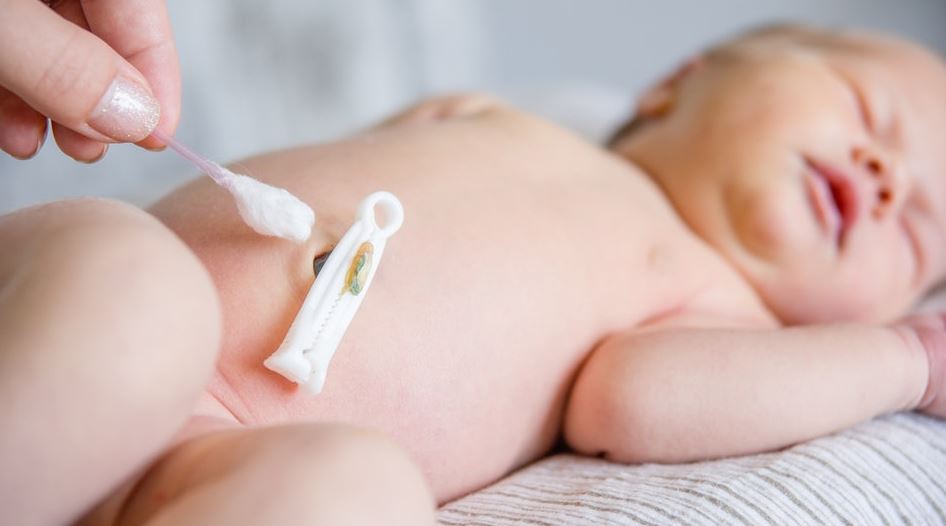How To Clean Newborn Baby Belly Button
By Elizabeth Helen Spencer
For 40 weeks or so of pregnancy, you planned and anticipated. Now the picture in your mind is a living and breathing newborn. After a short hospital stay that often feels too brief, you get to take baby home and care for them without the assistance of the nursing team. For many new parents, this transition is a shock, regardless of how many books you read. There's so much to do and newborn belly button care is no small part of your to-do list. Knowing how to clean your baby's belly button is important and honestly, you're probably too sleep deprived to remember the instructions from the hospital. Both the World Health Organization (WHO) and the American Academy of Pediatrics (AAP) recommend a dry approach to belly button care until the umbilical cord stump falls off within the first one to two weeks of life.
What does "dry care" mean when it comes to your baby's belly button? "Simply keeping the umbilical cord clean and dry," Catherine Gritchen, a pediatrician at Miller Children's and Women's Hospital in Long Beach, California, tells Romper over email. Before 1998, when WHO changed its recommendation to dry care, the standard approach to belly button care was to apply antibacterial or antiseptic topical care to the cord stump. However, explains Gritchen, "Using any type of antibacterial application (such as alcohol or triple dye) actually tends to delay the cord separation because it kills off the beneficial bacteria that help with separation. Also, it can select for opportunistic 'bad' bacteria, actually increasing the chance of infection." In poorer countries where clean water and hygiene are not guaranteed, this "wet" approach is still used, but it is no longer necessary or considered best practice in the United States.
While we commonly think and refer to it as a belly button, it's important to keep in mind that a newborn doesn't really have a belly button until their umbilical cord stump falls off. Until then, "the umbilical cord stump is a healing tissue from the placenta," explainsTrung Tristan Truong, MD a pediatrician at MemorialCare Saddleback Medical Center in Laguna Hills, California. This is why infection (called omphalitis), if it occurs, can be serious. Babies need to receive intravenous antibiotic therapy in the hospital if they contract omphalitis.
As part of baby's daily routine until the cord stump falls off, "you should keep the umbilical cord dry and fold the diaper down below the cord so that it doesn't get wet from urine," Gina Posner, a pediatrician at Orange Coast Medical Center in Fountain Valley, California, tells Romper over email. This means no immersive bathing (sponge baths are okay) during the period of cord stump care. "If the cord stump comes into contact with urine or fecal matter, just clean it with water," adds Truong.
"After the cord falls off, the stump may be moist and have bit of bleeding around the edges," says Gritchen. You can "simply wash with soap and water and pat dry," she adds. After the belly button area is completely healed and dry, you can begin a normal bath rountine for your baby.
Luckily, all three doctors say the instructions for belly button cleaning and care are the same whether you're one month old or an adult: treat it like any other creased or folded area of skin. Don't rub too hard, be gentle, and use a Q-tip if you need to remove debris or water. Everyone's belly button scar is unique, and beyond the inner/outie dichotomy, some navals are deeper or more folded than others. As your newborn grows into an older baby and young toddler, belly buttons (theirs, yours, the whole family's) become a source of amusement. You'll hardly remember struggling to get the plastic clamp off all those months ago.
How To Clean Newborn Baby Belly Button
Source: https://www.memorialcare.org/blog/how-clean-your-babys-belly-button-because-its-not-exactly-ready-bathing
Posted by: thompsonkimmilloof.blogspot.com

0 Response to "How To Clean Newborn Baby Belly Button"
Post a Comment